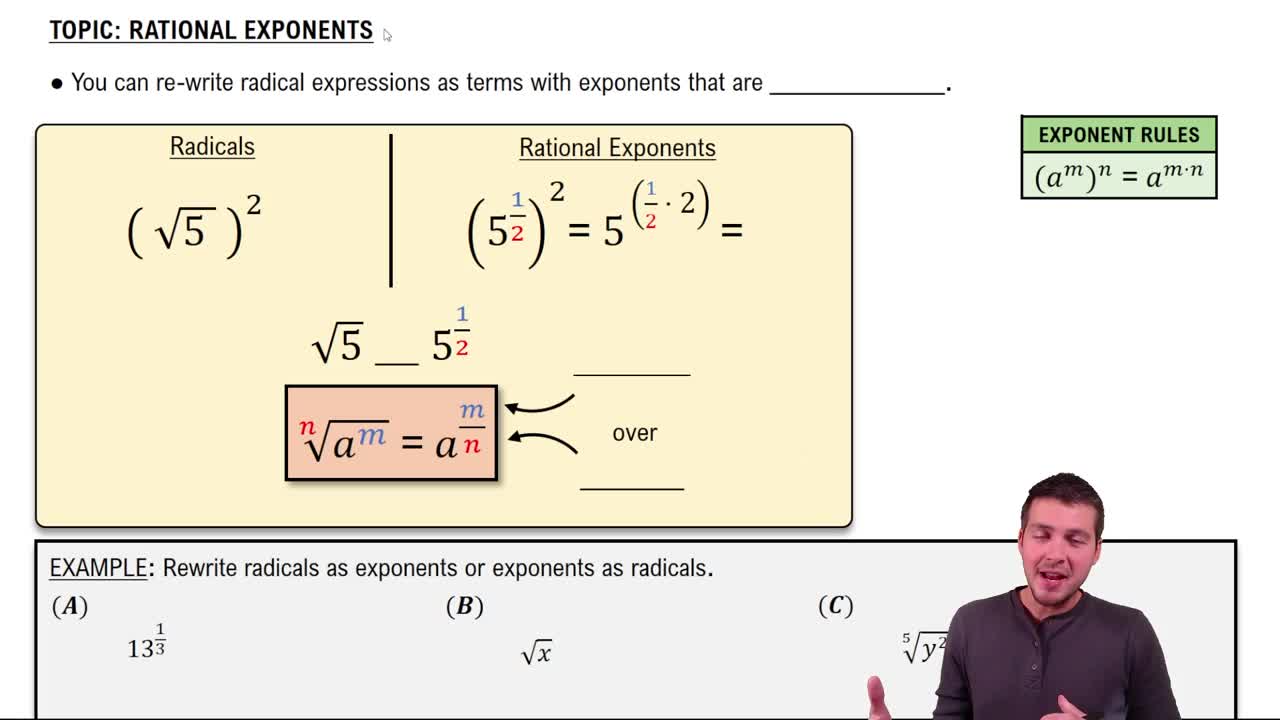Here are the essential concepts you must grasp in order to answer the question correctly.
Radicals and Exponents
Radicals are expressions that involve roots, such as square roots or cube roots. The cube root of a number 'a' is expressed as ∛a, which is equivalent to a raised to the power of 1/3. Understanding the relationship between radicals and exponents is crucial for manipulating and evaluating expressions involving roots.
Recommended video:
Evaluating Cube Roots
To evaluate a cube root, you need to find a number that, when multiplied by itself three times, equals the original number. For example, ∛64 asks for a number that satisfies x³ = 64. Recognizing that 4 × 4 × 4 = 64 allows us to conclude that ∛64 = 4.
Recommended video:
Imaginary Roots with the Square Root Property
Properties of Exponents
Properties of exponents, such as the product of powers and power of a power, help simplify expressions involving exponents. When rewriting radicals as exponents, these properties can be applied to combine or simplify terms. For instance, knowing that a^(m/n) = ∛(a^m) can facilitate the evaluation of expressions like ∛64.
Recommended video:



